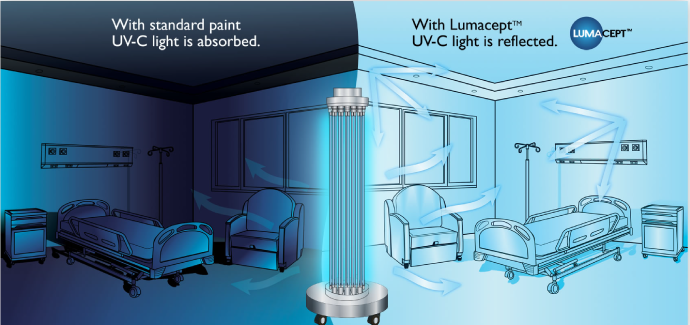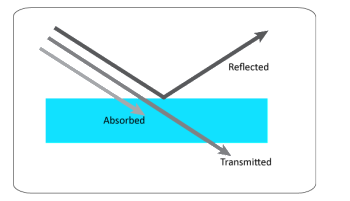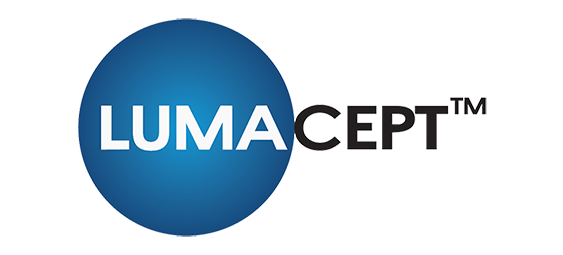As the use of UV-C disinfection in healthcare facilities continues to grow, infection preventionists are eager to learn more about the technology and how to best implement it in their facilities. It is important not only to understand the basics of how UV light behaves in a hospital room, but also to consider what it means in terms of developing disinfection protocols and designing healthcare facilities.
We like to use this simple graphic to demonstrate the difference between Lumacept and traditional paint.

However, it doesn’t tell the full story. The next time you are in a patient room, look around and notice all of the different materials found throughout the room- on the walls, floor, ceiling, furniture, windows, and equipment. You’ll see a combination of plastics, laminates, wood, glass, metal, ceramic, etc.
So what happens when the UV light from a disinfection device hits these objects? In general, it can only do three things. It can be absorbed, transmitted, or reflected. Usually, it is some combination of the three.

For practical purposes, here is a quick summary of what we can say about common materials found in healthcare facilities:
Surfaces that mostly absorb UV-C
Glass- windows, mirrors
Wood- including finished or painted wood
Traditional paint
Vinyl- wall coverings, floor tile
Formica
Ceiling tiles
Ceramic floor tiles
Fabrics- most fabrics made from natural or synthetic fibers
Surfaces that mostly reflect UV-C
Metal- bare metal only
Lumacept (of course)
More about metal: It can be highly UV-C reflective, or it can be only slightly reflective. It really depends on the type of metal and surface quality. Highly polished aluminum is about as reflective as it gets, while dull stainless or galvanized steel is significantly less reflective.
We’ll publish more about this topic in the near future. In the meantime, feel free to contact us with your questions.
